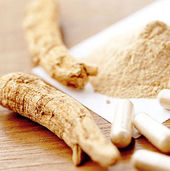The fact that many cultures emphasize the concept of "noblesse oblige" (the idea that with great power and prestige come responsibilities) suggests that power may diminish a tendency to help others. Psychologist Gerben A. van Kleef (University of Amsterdam) and his colleagues from University of California, Berkeley, examined how power influences emotional reactions to the suffering of others. A group of undergraduates completed questionnaires about their personal sense of power, which identified them to the researchers as either being high-power or low-power. The students were then randomly paired up and had to tell their partner about an event which had caused them emotional suffering and pain. Their partners then rated their emotions after hearing the story. In addition, the researchers were interested in seeing if there were physical differences in the way high-power people and low-power people responded to others' suffering; specifically they wanted to test if high-powered individuals would exhibit greater autonomic emotion regulation [or respiratory sinus arrhythmia (RSA) reactivity]. When we are faced with psychological stress, our RSA reactivity increases, resulting in a lower heart rate and a calmed, relaxed feeling. To measure RSA reactivity and heart rates, all of the participants were connected to electrocardiogram (ECG) machines during the experiment.
Researchers pinpoint a crucial crossroads for brain communication and a target for a radical depression treatment
When Helen Mayberg started curing depression by stimulating a previously unknown neural junction box in a brain area called Brodmann's area 25 - discovered through 20 years of dogged research - people asked her where she was going to look next. Her reaction was, "What do you mean, Where am I going to look next? I'm going to look more closely here!"
XinhuaThu, 26 Nov 2009 07:37 UTC
U.S. scientists have uncovered evidence of a primitive emotion-like behavior in the fruit fly, and their finding may facilitate studies of the relationship between a corrective medicine and a learning disability.
The evidence, published by researchers with the California Institute of Technology (Caltech) in the December issue of the journal Neuron, may be relevant to the relationship between the neuro-transmitter dopamine and attention deficit hyperactivity disorder (ADHD).
Caltech researchers said that the brain of the fruit fly Drosophila contains only about 20,000 neurons, or nerve cells, and has long been considered enough for the studies of the genetic basis of such behavior as learning, memory, courtship and metabolism otherwise known as circadian rhythm.
But they are not yet sure whether the Drosophila brain could also be used to study the genetic basis of "emotional" behavior.
Air puffs on the hand or neck influence people's ability to hear certain spoken sounds.
People listen with their skin, not just their ears. Air puffs delivered to volunteers' hands or necks at critical times alter their ability, for better or worse, to hear certain speech sounds, a new study finds.
Tactile and auditory information, as well as other sensory inputs, interact in the brain to foster speech perception, propose linguists Bryan Gick and Donald Derrick, both of the University of British Columbia in Vancouver.
In many languages, speakers expel a small burst of air to make aspirated sounds. In English, for example, aspiration distinguishes ta from da and pa from ba.
Volunteers were more likely to identify aspirated syllables correctly when they heard those syllables while receiving slight, inaudible air puffs to the skin, Gick and Derrick report in the Nov. 26 Nature. Air puffs enhanced detection of aspirated ta and pa sounds and increased the likelihood of mishearing non-aspirated da and ba sounds as their aspirated counterparts, the researchers say.
When cells are confronted with an invading virus or bacteria or exposed to an irritating chemical, they protect themselves by going off their DNA recipe and inserting the wrong amino acid into new proteins to defend them against damage, scientists have discovered.
These "regulated errors" comprise a novel non-genetic mechanism by which cells can rapidly make important proteins more resistant to attack when stressed, said Tao Pan, Professor of Biochemistry and Molecular Biology at the University of Chicago. A team of 18 scientists from the University of Chicago and the National Institute of Allergy and Infectious Disease led by Pan and Jonathan Yewdell published the findings November 25 in the journal Nature.
"This mechanism allows every protein to get some protection," Pan said. "The genetic code is considered untouchable, but this is a non-genetic strategy used in cells to create a bodyguard for proteins."
It seems obvious that naturally waking up from sleep and being startled by something in the environment are two very different emotional states. However, the neuroscience that underlies these different forms of arousal has, for the most part, remained a mystery. Now, new research published by Cell Press in the November 25 issue of the journal Neuron demonstrates that there are at least two completely separate and independent forms of arousal in fruit flies. The study answers critical questions about how the nervous system processes arousal and may even shed some light on the neurobiology of human affective disorders, such as attention-deficit hyperactivity disorder (ADHD).
A state of arousal can be defined as in increase in activity or sensitivity and is central to many behaviors in all sorts of organisms. It has not been fully established whether arousal is a generalized state that can be heightened by specific stimuli or is more multidimensional. Further, although many studies have implicated key neurochemicals in arousal, the specific roles of these neuromodulators are unclear. "Previous studies with the fruit fly, Drosophila, have provided evidence that dopamine plays a role in arousal from sleep, known as endogenous arousal. However, evidence for a role for dopamine in exogenously generated arousal, that which is stimulated by a factor in the environment, is less consistent," explains senior study author Dr. David J. Anderson from the California Institute of Technology.

Ginseng has been used to treat erectile dysfunction and fatigue in cancer patients.
Enter winter. The earth's days are shorter; yours are not. You have as much to do as in summer and spring but all the cold and dark is sapping vital energy. Put down that Red Bull can and the 5,000 hour energy shot. Stop it with the triple dose lattes. Did you notice that you are still out of it a half hour later? Not to mention the shakes... Seriously, it's time go herbal on your energy crisis.
Evidence that the painkiller Vioxx might increase the risk of heart attacks and strokes emerged nearly four years before the drug was voluntarily withdrawn from the market, research has shown.
Vioxx, the brand name for rofecoxib, was designed to fight the pain of arthritis. It was launched in May 1999 by Merck & Co Inc. But in September 2004, Merck voluntarily pulled Vioxx following a large trial that was halted early after finding evidence linking Vioxx to a raised risk of cardiovascular events.

Brake wear is responsible for 20 per cent of traffic pollution
Findings highlight the importance of reducing brake particle emissions as well as exhaust to safeguard human health
Particles released by cars when they brake have been found to cause damage to lung cells.
Researchers at the University of Bern and the Institute of Health in Switzerland found that in laboratory tests the metals in brake wear particles can damage junctions between cells.
The US Conference of Catholic Bishops released an "Ethical and Religious Directive" this month that would ban any Catholic hospital, nursing home or hospice program from removing feeding tubes or ending palliative procedures of any kind, even when the individual has an advance directive to guide their end-of-life care. The Bishops' directive even notes that patient suffering is redemptive and brings the individual closer to Christ.
The Catholic bishops have become more involved in political fights in recent years, particularly the issue of abortion coverage and immigration provisions in the current health care debate. This has caused a schism in the American Catholic community, which bubbled to a head yesterday with Rep. Patrick Kennedy (D-RI) being denied communion because of his position on choice.